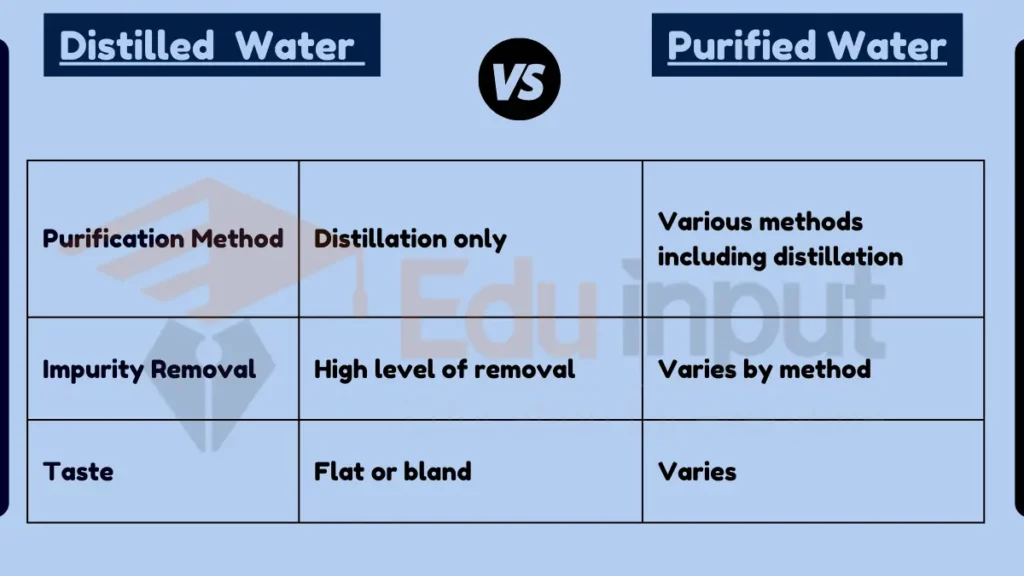Difference Between Distilled and Purified Water
Key Difference
Distilled water and purified water are both types of water that have been treated to remove impurities, but they differ in their methods of purification and the level of purity achieved. Distilled water is made by boiling water and then condensing the collected steam back into a liquid. This process removes impurities and minerals from the water.

Purified water, on the other hand, refers to water that has been purified through various processes, including distillation, but also reverse osmosis, carbon filtration, or micron filtration. Purified water can therefore come from any source, not just distillation, and its purity depends on the specific methods used.
Comparative Analysis
- Method of Purification:
- Distilled Water: Achieved through distillation (boiling and steam condensation).
- Purified Water: Can include distillation, reverse osmosis, filtration, or a combination of these methods.
- Removal of Impurities:
- Distilled Water: Removes most impurities, including minerals and microbes.
- Purified Water: Degree of impurity removal varies with the purification process.
- Taste:
- Distilled Water: Often described as flat or bland due to the absence of minerals.
- Purified Water: Taste can vary based on the source and purification process.
- Uses:
- Distilled Water: Often used in laboratories, medical devices, and where mineral-free water is needed.
- Purified Water: Suitable for drinking, cooking, and a variety of other uses.
- Cost and Accessibility:
- Distilled Water: Generally more costly due to the energy-intensive distillation process.
- Purified Water: More widely available and varied in cost.
Table Summary
| Feature | Distilled Water | Purified Water |
|---|---|---|
| Purification Method | Distillation only | Various methods including distillation |
| Impurity Removal | High level of removal | Varies by method |
| Taste | Flat or bland | Varies |
| Uses | Laboratories, medical devices | Drinking, cooking, general use |
| Cost | Generally higher | Varies, more accessible |
While both distilled and purified water provide cleaner alternatives to tap water, their differences lie in the methods of purification and the resultant taste and uses. Distilled water, with its high purity level, is particularly useful in settings where mineral content can interfere with processes or equipment. Purified water, with its varied methods of purification, offers flexibility in both taste and application, making it suitable for a wider range of everyday uses.



Leave a Reply